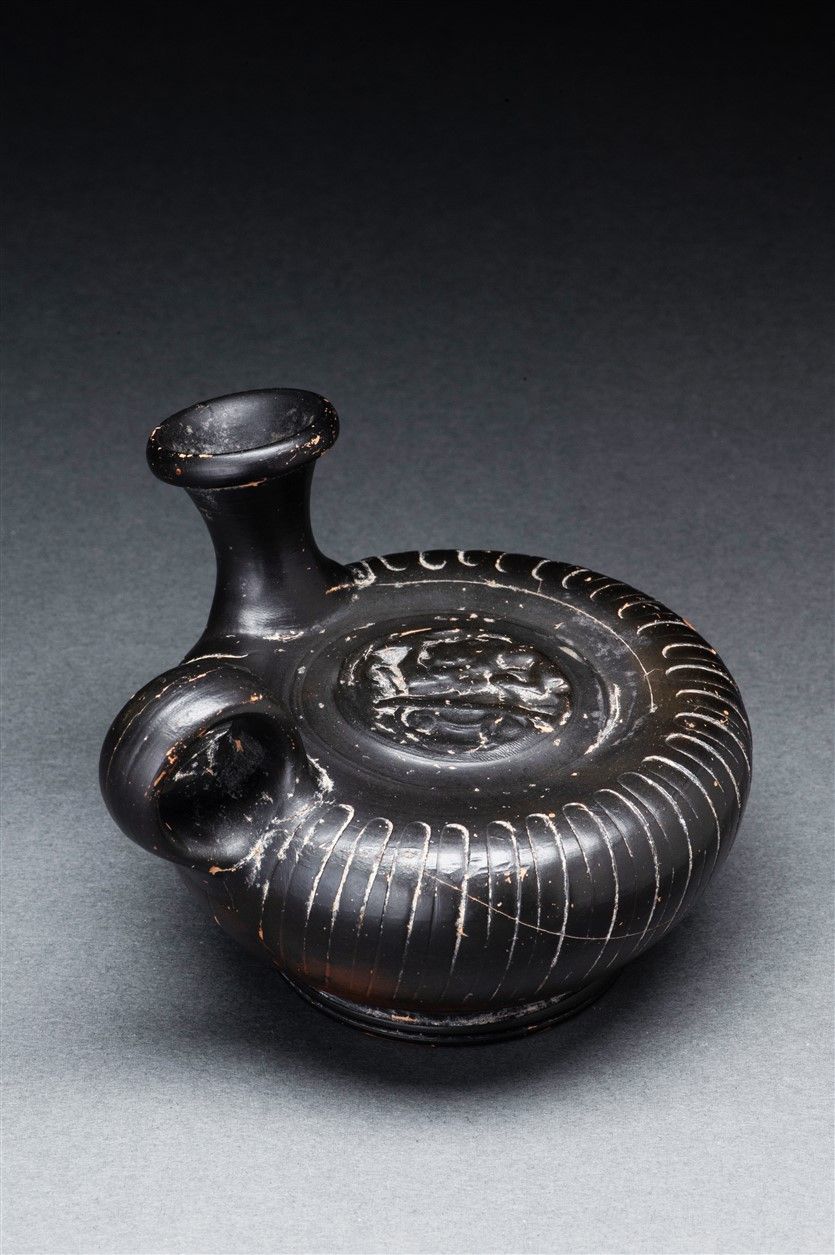Description
Black glazed ceramic guttus decorated with a medallion in relief, moulded and glued in barbotine, of a lion attacking a gazelle on an Ionic capital. This unusual motif probably comes from a coin model, such as the Velia statere in Lucania. The word "guttus" designates a vase made to pour a liquid drop by drop. It has a long spout and a ring-shaped handle on the side of the bowl. This type of guttus contained scented oils and was used for palestra exercises or for washing. The moulded rim on the outside of the spout was used to spread the oil on the skin. The separately modelled spout was attached after a hole had been cut in the shoulder of the vase from the outside in. The pieces of clay that the potter could not remove could make a noise like a rattle, so it was thought that the gutti were tintinnabula. Apulia, ca. 300 B.C.C 9,5 x 9,6 cm Former collection of the family of Theodore De Sevin, a Toulouse notable who undertook the first excavations of the Purpan amphitheatre in 1878.
301 .2
Online
Black glazed ceramic guttus decorated with a medallion in relief, moulded and glued in barbotine, of a lion attacking a gazelle on an Ionic capital. This unusual motif probably comes from a coin model, such as the Velia statere in Lucania. The word "guttus" designates a vase made to pour a liquid drop by drop. It has a long spout and a ring-shaped handle on the side of the bowl. This type of guttus contained scented oils and was used for palestra exercises or for washing. The moulded rim on the outside of the spout was used to spread the oil on the skin. The separately modelled spout was attached after a hole had been cut in the shoulder of the vase from the outside in. The pieces of clay that the potter could not remove could make a noise like a rattle, so it was thought that the gutti were tintinnabula. Apulia, ca. 300 B.C.C 9,5 x 9,6 cm Former collection of the family of Theodore De Sevin, a Toulouse notable who undertook the first excavations of the Purpan amphitheatre in 1878.
